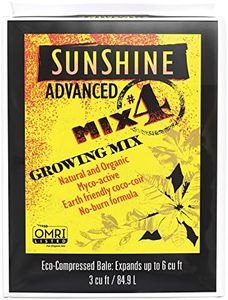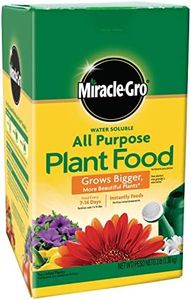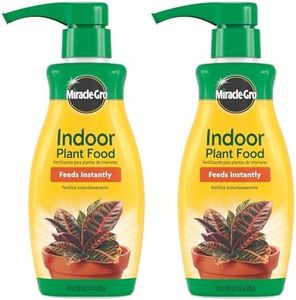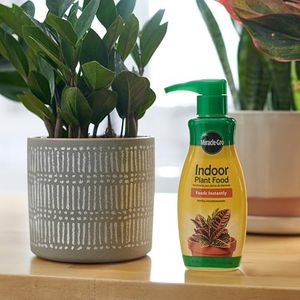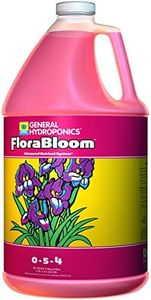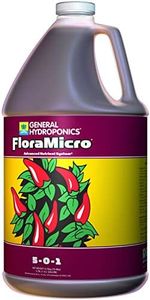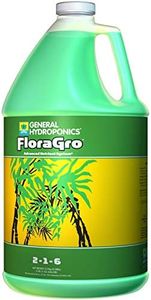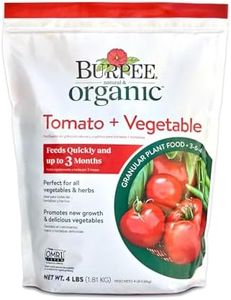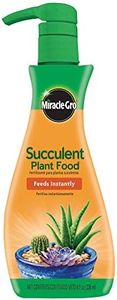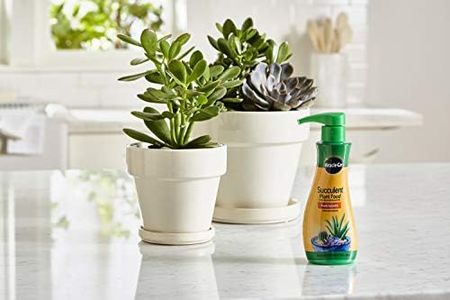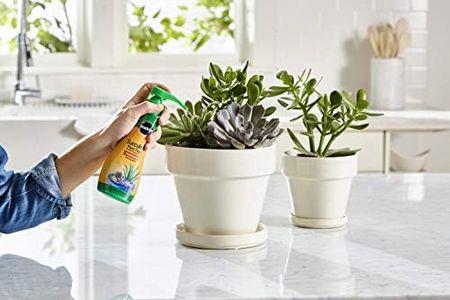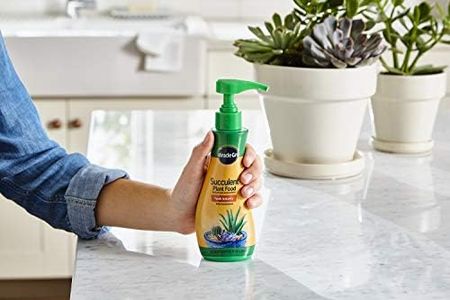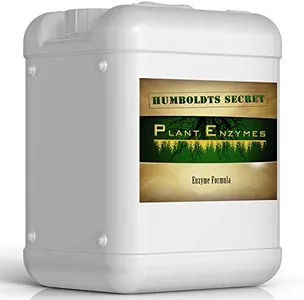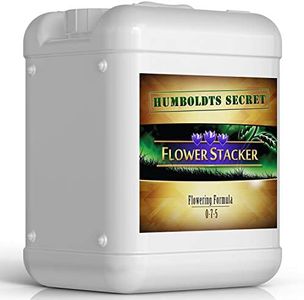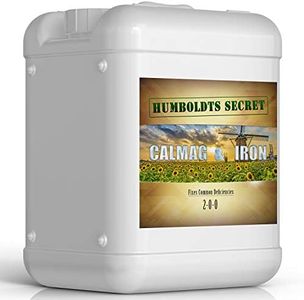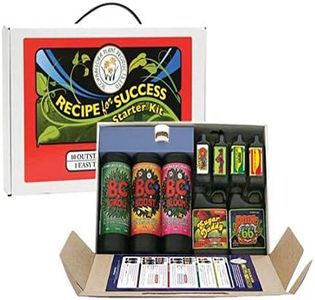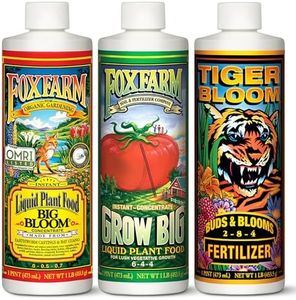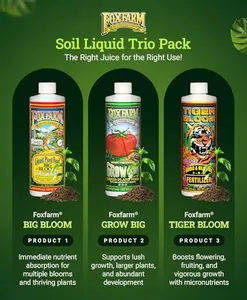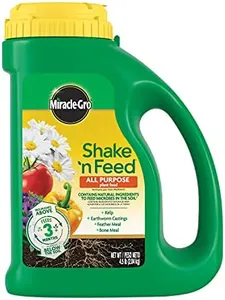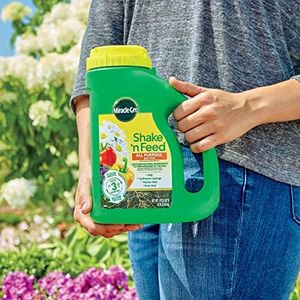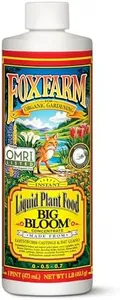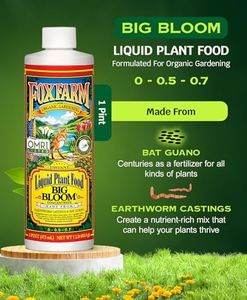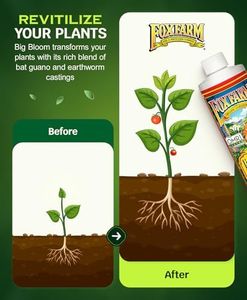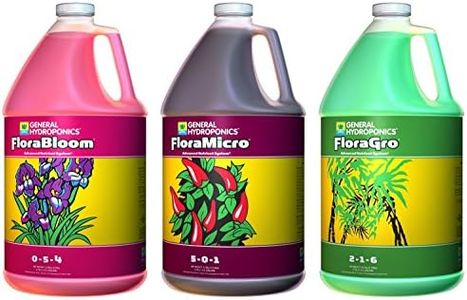10 Best Plant Fertilizers 2025 in the United States
Winner
Miracle-Gro Water Soluble All Purpose Plant Food, Fertilizer for Indoor or Outdoor Flowers, Vegetables or Trees, 3 lbs.
Miracle-Gro Water Soluble All Purpose Plant Food, Fertilizer for Indoor or Outdoor Flowers, Vegetables or Trees, 3 lbs.
Chosen by 1295 this week
Miracle-Gro Indoor Plant Food, Liquid Plant Food for Houseplants, Snake Plants, Peace Lilies, Flowers, Vegetables, Herbs and More, 8 oz., 2-Pack
Miracle-Gro Indoor Plant Food, Liquid Plant Food for Houseplants, Snake Plants, Peace Lilies, Flowers, Vegetables, Herbs and More, 8 oz., 2-Pack
General Hydroponics FloraSeries Hydroponic Nutrient Fertilizer System with FloraMicro, FloraBloom and FloraGro, 1 gal.
General Hydroponics FloraSeries Hydroponic Nutrient Fertilizer System with FloraMicro, FloraBloom and FloraGro, 1 gal.
Burpee Organic Tomato & Vegetable Granular Plant Food, 4 lb
Burpee Organic Tomato & Vegetable Granular Plant Food, 4 lb
Osmocote Smart-Release Plant Food Plus Outdoor and Indoor, For Most Plant Types, In-Ground and Container Plants, Contains 11 Essential Nutrients, 8 lb.
Osmocote Smart-Release Plant Food Plus Outdoor and Indoor, For Most Plant Types, In-Ground and Container Plants, Contains 11 Essential Nutrients, 8 lb.
Miracle-Gro Shake 'N Feed All Purpose Plant Food, For In-Ground and Container Plants, Feeds for up to 3 Months, 4.5 lbs.
Miracle-Gro Shake 'N Feed All Purpose Plant Food, For In-Ground and Container Plants, Feeds for up to 3 Months, 4.5 lbs.
Our technology thoroughly searches through the online shopping world, reviewing hundreds of sites. We then process and analyze this information, updating in real-time to bring you the latest top-rated products. This way, you always get the best and most current options available.

Our Top Picks
Winner
Miracle-Gro Water Soluble All Purpose Plant Food, Fertilizer for Indoor or Outdoor Flowers, Vegetables or Trees, 3 lbs.
Miracle-Gro Water Soluble All Purpose Plant Food is a popular and easy-to-use fertilizer suited for a wide variety of plants including flowers, vegetables, trees, shrubs, and houseplants. It comes in a powder form that dissolves in water, making it convenient to apply with a watering can or garden feeder. This fertilizer provides essential nutrients instantly, helping plants grow bigger and healthier when fed every 1-2 weeks.
Miracle-Gro is known for a balanced formula that supports general plant growth rather than targeting specific needs. It is synthetic rather than organic, which means it works quickly but may not suit those looking for natural gardening options. The product is safe to use as directed and unlikely to burn plants, which is reassuring for beginners.
This fertilizer may not be ideal for gardeners who require fertilizers tailored to particular soil pH levels or specialized nutrient mixes for sensitive plants. Its versatility and positive reception make it a solid choice for most casual indoor and outdoor gardeners seeking a straightforward, reliable fertilizer to boost plant health.
Miracle-Gro Indoor Plant Food, Liquid Plant Food for Houseplants, Snake Plants, Peace Lilies, Flowers, Vegetables, Herbs and More, 8 oz., 2-Pack
Most important from
28287 reviews
Miracle-Gro Indoor Plant Food is a liquid fertilizer designed to help indoor plants grow well by providing essential nutrients quickly. Miracle-Gro products typically contain a balanced mix of nitrogen, phosphorus, and potassium suited for a wide variety of houseplants, including snake plants, peace lilies, flowers, vegetables, and herbs. It’s a synthetic fertilizer, which means nutrients are readily available for fast absorption.
This product is easy to use—you can apply it directly to the soil with a pump or dilute it in water for watering, making it convenient for different pot sizes and preferences. Because it’s synthetic, it’s not organic, so it may not be the best choice if you prefer natural fertilizers. The liquid form allows for immediate feeding, which can be an advantage for quick growth boosts, but regular application is necessary as nutrients do not remain in the soil as long as slow-release types.
This fertilizer is a strong option if you want an easy and effective way to feed a variety of indoor plants, especially if you’re looking for something straightforward and fast-acting. Just keep in mind that for sensitive plants or specific soil conditions, you might need to check if this product matches your needs.
Most important from
28287 reviews
General Hydroponics FloraSeries Hydroponic Nutrient Fertilizer System with FloraMicro, FloraBloom and FloraGro, 1 gal.
The General Hydroponics FloraSeries is a liquid nutrient system specially designed for hydroponic plants, offering three components: FloraMicro, FloraGro, and FloraBloom. Each part targets different growth stages—FloraMicro provides nitrogen, calcium, and important micronutrients for overall development; FloraGro supports leaf and structural growth with nitrogen, phosphorus, potassium, and magnesium; FloraBloom focuses on flowering and fruiting with extra phosphorus and potassium. This mix covers a broad range of essential nutrients, making it a versatile choice for hydroponic gardeners who want precise control over plant feeding. It’s a synthetic fertilizer, so it’s not organic, which might matter if you prefer natural products.
The product doesn’t specify soil pH compatibility since it’s made for soilless systems, but hydroponic growers typically adjust pH separately. Application is straightforward as a liquid, allowing easy mixing in water for consistent feeding. It is highly regarded for effectiveness and flexibility, though beginners should be aware it requires monitoring and adjusting nutrient ratios as plants grow.
For those growing plants hydroponically and seeking a reliable, stage-specific fertilizer system, this product represents a strong option. However, growers looking for organic or soil-based choices might consider other alternatives.
